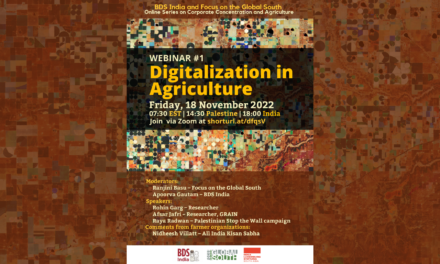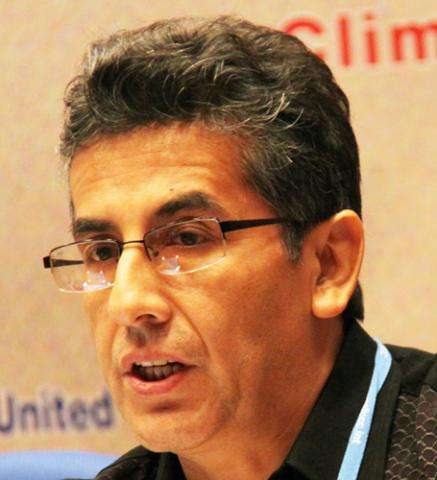C.P. Chandrasekhar*
(Note:
The full text of this article with graphs can be found at
http://www.networkideas.org/news/jun2007/news14_Global_Finance.htm )
The nature of financial integration of developing
countries with their developed counterparts has been radically
transformed over the last four years. Evidence collated by the World
Bank's annual report for 2007 on Global Development Finance, reveal a
number of features of the new scenario that have far-reaching
implications.
The first of these is an acceleration of financial
flows to developing countries (Chart 1 – see above) precisely during
the years when as a group they have been characterised by rising
surpluses on their current account. Total flows touched a record
estimated $600 billion in 2006, having risen by 19 per cent on top of
an average growth of 40 per cent during the three previous years.
Relative to the GDP of these countries, total flows, at 5.1 per cent,
are at levels they touched at the time of the East Asian financial
crisis in 1997.
A second feature is the acceleration of the long term
tendency for private flows to dominate over official (bilateral and
multilateral) flows. Private debt and equity inflows, which had risen
by 50 per cent a year over the three years ending 2005, increased a
further 17 per cent in 2006 to touch a record $647 billion (Chart 2 –
see above). On the other hand net official lending has in fact
declined over the last two years. One factor accounting for this is
the failure of the G7 to match promises of a substantial hike in aid
disbursements beyond what the retirement of the debt of few heavily
indebted poor countries ensures. The other is that the more developed
among the developing countries have chose to make advance repayments
of debt owed to official creditors, especially the IMF and the World
Bank. Overall, principal repayments to official creditors exceeded
disbursements by $70 billion in 2005 and $75 billion in 2006. In the
event there has been a reverse flow of capital to the World Bank and
the IMF, which is threatening the viability and influence of these
institutions, especially the latter. However, the increase in private
flows has more than matched the reverse flows to official creditors.
The third feature is that the dominance of private
flows has meant that both equity and debt flows to developing
countries have risen rapidly, with the surge being greater in the
case of the former. Net private debt and equity flows to developing
countries have risen from a little less that $170 billion in 2002 to
close to $647 billion in 2006, an almost four-fold increase over a
four-year period. While net private equity flows, that rose from $163
billion to $419 billion dominated the surge, net private debt flows
too increased rapidly. Bond issues rose from $10.4 billion to $49.3
billion and borrowing from international banks from $2.3 billion to a
huge $112.2 billion. What is more, net short-term debt, outflows of
which tend to trigger financial crises, has risen from around half a
billion in 2002 to $72 billion in 2006.
The fourth feature, which is a corollary of these
developments, is that there is a high degree of concentration of
flows to developing countries, implying excess exposure in a few
countries. Ten countries (out of 135) accounted for 60 per cent of
all borrowing during 2002-04, and that proportion has risen
subsequently to touch three-fourths in 2006. In the portfolio equity
market, flows to developing countries were directed at acquiring a
share in equity either through the secondary market or by buying into
initial public offers (IPOs). IPOs dominated in 2006, accounting for
$53 billion of the $96 billion inflow. But here too there were signs
of concentration. Four of the 10 largest IPOs were by Chinese
companies, accounting for two-thirds of total IPO value. Another 3 of
those 10 were by Russian companies, accounting for an additional 22
per cent of IPO value.
A fifth feature is that despite this rapid rise in
developing country exposure, with that exposure being excessively
concentrated in a few countries, the market is still overtly
optimistic. Ratings upgrades dominate downgrades in the bond market.
And bond market spreads are at unusual lows. This optimism indicates
that risk assessments are pro-cyclical, underestimating risk when
investments are booming, and overestimating risks when markets turn
downwards. But two consequences are the herding of investors in
developing country markets and their willingness to invest in a
larger volume of money in risky, unrated instruments.
Finally, the rapid rise in capital flows to developing
countries at a time when many of them are recording large current
account surpluses has substantially increased their foreign exchange
reserves and triggered a flow of capital out of developing countries.
This outflow takes three forms: (i) investment of reserves in safe
and low-return instruments such as US Treasury Bills; (ii) financing
of asset acquisition to support the growing presence of leading
developing country firms in global commodity markets; and (iii)
financial investments in and lending to other developing countries,
resulting in the South-South flow of capital. These trends together
suggest that developing countries are still largely restricted to the
low return or high risk segments of global capital flow. This is the
cost they bear to meet the requirements of ensuring balance in the
global balance of payments.
These features of the current global financial scenario
can be interpreted in two ways. One is in the direction taken by the
World Bank. It admits, on the one hand, that "the probability of
a turn in the credit cycle" has risen and that a "key
challenge facing developing countries is to manage the transition by
taking pre-emptive measures aimed at lessening the risk of a sharp,
unexpected reversal in capital flows". On the other, it
downplays the dangers involved by arguing that the surge in capital
flows "speaks well for the resiliency of developing economies
and for the ability of international financial markets to manage
risks."
An alternative view would be that many emerging market
economies that attract a disproportionate share of these capital
flows, are fast approaching a situation where they are vulnerable to
financial crises, with the current scenario incorporating features
that could make these crises more intense. What is more, it appears
that prudential norms, risk management techniques and disclosure
requirements put in place as part of the so-called "new
international financial architecture" seem inadequate to
foreclose a build up of this kind. This is not surprising, since
garnering large and quick profits rather than minimising risks seems
to be the dominant requirement of financial institutions from the
developed countries.
The current situation is the inevitable result of
expanding the space for financial capital through dilution or
elimination of regulation. Financial liberalisation has ensured that
since the late 1970s, the newly discovered "emerging markets"
among developing countries have been the new frontier for
profiteering by global financial institutions. Awash with the
liquidity derived from the surpluses earned by oil exporters and the
savings accumulated by the generation of baby-boomers in the West,
banks, investment funds and pension funds were looking to new avenues
for lucrative investments. The role of financial intermediaries was
one of dressing up developing countries that were hitherto
"untouchables" as lucrative destinations for financial
capital. And financial innovation consisted in not just identifying
instruments that could carry such investments, but derivatives that
could help hedge against the risk associated with rushing into
uncharted territory.
The process began when developing countries were still
reeling under the effects of declining non-fuel commodity prices and
rising oil prices, which had left gaping holes in the current account
of their balance of payments. The new found interest of global
finance offered developing country governments an opportunity to
finance that gap, even if it meant offering high returns to foreign
financial investors. It was this conflation of interests of
developing country governments and financial institutions from the
developed countries that led up to the debt crisis of the 1980s and
the financial crises of the 1990s, including those that began with
the East Asian crises in 1997.
One consequence of the 1997 crisis was a sharp decline
in lending to developing countries. But this did not mean a decline
in capital flows. Rather, encouraged by the post-crisis deflation in
asset prices in emerging markets and the sharp devaluation of their
currencies, foreign direct investment kept flowing into developing
countries to acquire assets at rock bottom prices when measured in
hard currencies. While net debt flows to developing countries
declined from $53.1 billion in 1998 to just $1.2 billion in 2000, net
FDI flows remained more or less stable at around $170 billion a year.
Since 2002, when growth accelerated or remained high in
China and India and commodity prices rose sharply in the case of oil
and metals and moderately in the case of agriculture, this lull in
capital flows has given way to a surge. Besides the features noted
above, three kinds of developments have accompanied this surge.
First, the growing importance of unregulated hedge funds looking for
abnormal returns in portfolio equity markets, which renders activity
in those markets highly speculative and opaque. Second, the rapid
increase in investments by "private equity" firms –
investing largely in unlisted equity – in corporations in developing
countries. The size of each of these investments is such that they
are identified as foreign "direct" investments, even though
their objective is speculative. The evidence on the controversial
role played by these firms in the developed countries indicates that
their activity too is extremely opaque. Third, the revival once again
of the global market for developing country debt, driven this time by
private corporate borrowing in the syndicated loan market. Since this
new surge in credit rides on a wave of securitisation that transfers
the risk associated with such lending to pension and mutual funds
among others, accumulating risk does not serve as a deterrent on
banks creating such credit.
There are a number of implications of these tendencies.
To start with, the risk associated with the current surge in capital
flows can be and is much greater than was true during previous
episodes involving a similar surge. Moreover, the surge is
accompanied by the growing acquisition of assets in developing
countries outside the stock market with objectives that are largely
speculative, so that a sell-off, if it occurs, would be far more
widespread. And the persistence of the herd instinct has meant that
the surge in fixed and portfolio investment flows has resulted in a
revival of credit flows that is unbridled since it is accompanied by
risk-mitigation techniques that transfer risk to those who are least
equipped to assess them. Unfortunately, all of this occurs in an
environment in which the target of both investment and debt flows is
the private sector, which makes it difficult for governments that
have liberalised financial regulation to control such flows. In sum,
the risks associated with the current surge in capital flows are far
greater than emerges from the World Bank's rather sanguine assessment
of the possible fall-out of the ongoing transformation of global
financial flows. A turn in the investment cycle, with far-reaching
implications, is real and imminent.
* CP Chandrasekhar is Professor at the Centre for
Economic Studies & Planning, Jawaharlal Nehru University and
Member, Executive Committee, International Development Economic
Associates (IDEAs). June 14, 2007. © International Development
Economics Associates 2007









